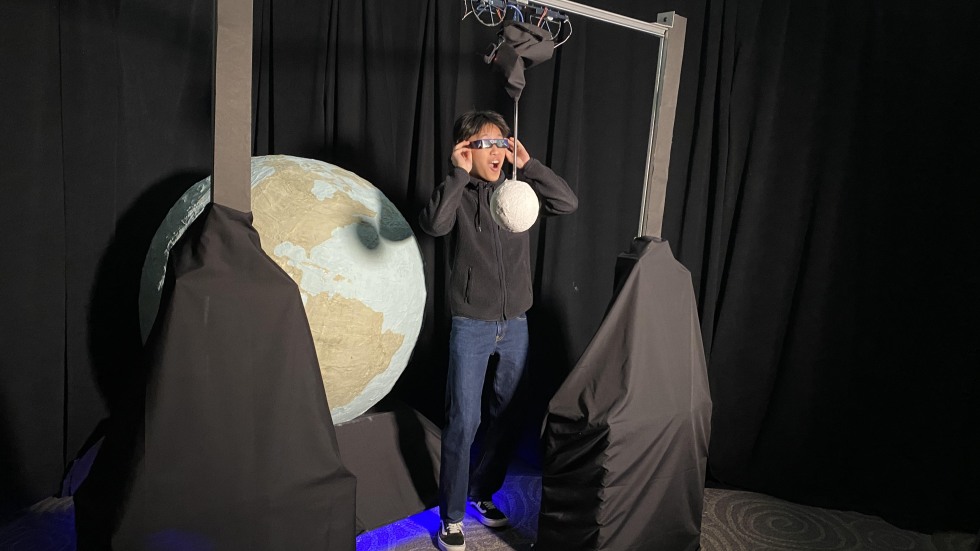This phenomenal exhibit was designed, built and installed in the BDW by first-year physics students led by Professor Rick Gaitskell with the administrative expertise and guidance of Center administrator Ariel Green.
This is a large-scale, dynamic model in the Barus and Holley lobby that illustrates why partial and total solar eclipses occur. It allows us to view what a total solar eclipse looks like from space and see why the Moon, which is nearly 400 times smaller in diameter, can, nevertheless, perfectly block the Sun’s in one narrow path across the surface of the Earth; this is also known as the path of totality.
This is shown by the darkest shadow on our large Earth model, called the umbra. The partial solar eclipse also called the penumbra, is also demonstrated in our Earth model by a dimmer, larger shadow passing in a wider path across Earth.
The students calculated the distance, angle, and size of our Earth and Moon models and the brightness and positioning needed for our sunlight source. They designed and built the mechanical components to animate the Moon’s movement with a small motor.
After much trial and error, they designed and constructed all of the components for the eclipse model.
Students in grades 3 - 5 of the French American School of Rhode Island (FASRI) toured the installation on Friday. FASRI's elementary coordinator, Brian Pruvost, said the young students in grades 4 & 5 had a similar assignment, "imagining and designing models representing astronomical phenomena such as the Earth's rotation and revolution, and the phases of the Moon." The FASRI group noted similarities between their work and that of Brown's physics students, including "crafting celestial objects, simulating sunlight, utilizing robotics, trial and error."
The Department of Physics is proud of all our students and the outstanding result!
